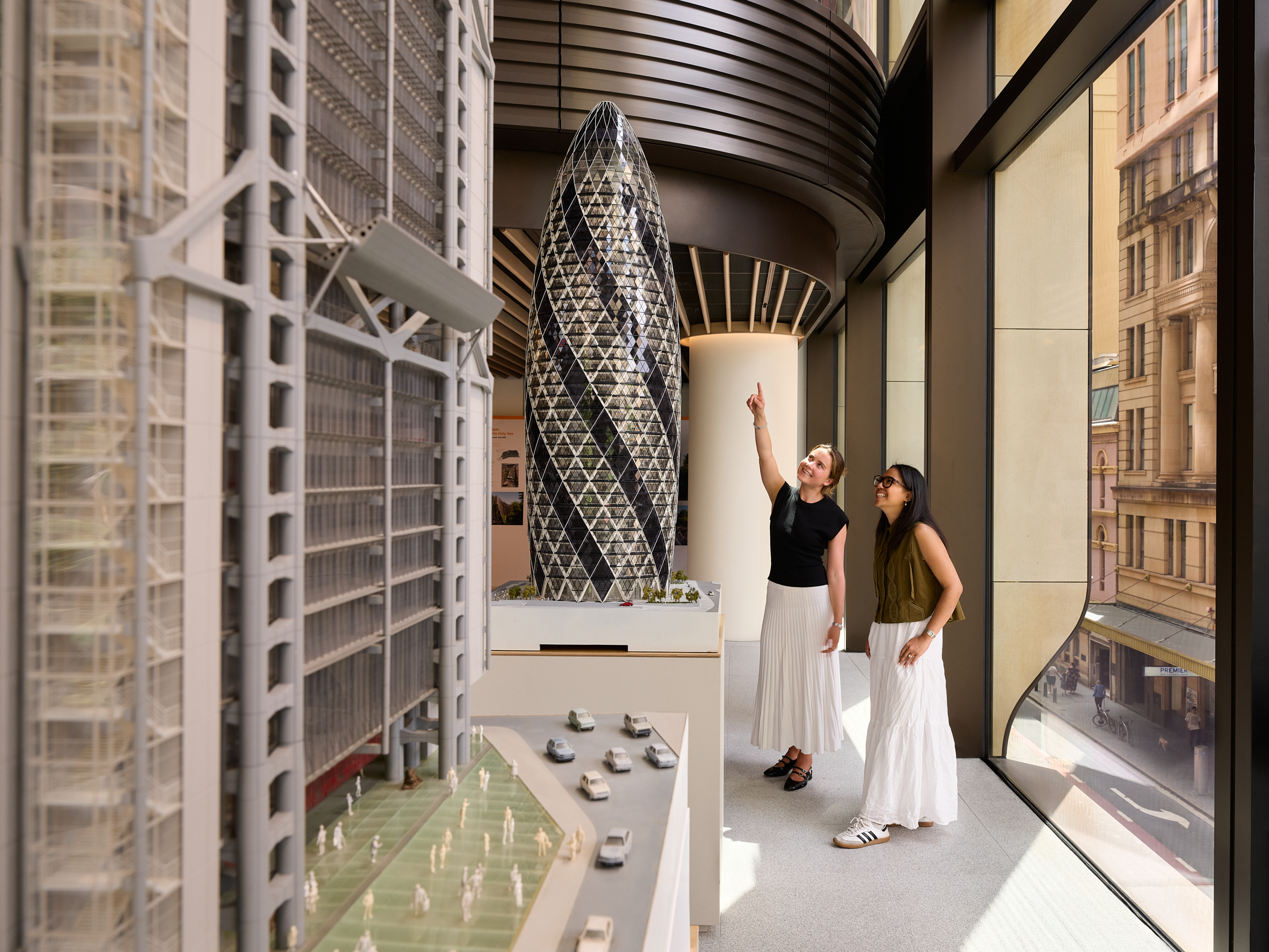The Met May Have Millions in Stolen Art. It’s Not Waiting to Be Asked to Return It.
The museum is taking the lead on re-evaluating its art and artifacts to determine where these works came from in the first place.
At the Metropolitan Museum of Art in late February, an increasingly familiar scene played out: A museum was restituting a work of art, giving back something from its collection to the place where it originated—in this case, Greece. The announcement, however, was more celebratory than sheepish. It was being done with the fanfare more often associated with acquiring a great object rather than returning one. That’s because, in this case, the Met itself launched the inquiry into the sculpture’s origin.
The work in question was a small bronze sculpture of the head of a griffin, a mythological creature, made in the 7th century B.C. It had been on display at the Met since 1972. Max Hollein, the Met’s director and CEO, spoke to the assembled crowd. The piece, he said, “could not have legitimately left” Greece.
Over the last few years, museums have had to respond to inquiries—sometimes as part of legal claims that can come from countries or former owners, or are initiated by U.S. law enforcement—about works that were stolen, illegally excavated, exported or traded improperly.
But with the griffin head, the Met didn’t wait to be asked. Greek authorities weren’t attempting to reclaim it. Instead, in a turn that shows how the process of repatriation and restitution has changed, the Met took the initiative to investigate how the griffin head got into its collection. The museum found it had disappeared from the Archaeological Museum of Olympia in the 1930s.
Last year the Met appointed Lucian Simmons, a lawyer and former Sotheby’s executive, to be its first-ever head of provenance. He leads a team of 10 full-time researchers, which the Met says is the biggest staff dedicated to this task at any museum.
Simmons acts as “air-traffic control,” he said, providing support, supervision and coordination to the provenance research specialists, who are embedded within the museum’s departments.
Simmons’s broader philosophy is that more sunlight is better when it comes to determining pieces’ back stories. “We need to know the truth,” he said. “Sometimes it’s uncomfortable.”
With these claims, the stakes are often high: In 2022, local and federal authorities seized 27 objects worth a reported $13 million from the Met and returned them to Italy and Egypt, their countries of origin.
Provenance research, or finding a comprehensive record of an art object’s previous ownership and history, is “core museum work” these days, said Hollein, certainly when it comes to vetting new acquisitions. But now, more museums are examining the back story of objects they’ve had for decades and then taking action based on what they find.
“Museums used to take a wait-and-see approach,” said William M. Griswold, the director of the Cleveland Museum of Art and the chair of the cultural property task force of the Association of Art Museum Directors. “Now, they are much more proactive about investigating and finding ways to resolve issues that pertain to provenance.”
Hollein noted how much the landscape of looking into a work’s provenance had changed. “Forty, fifty years ago, nobody cared about documents. It’s not because everything was illegal. That’s just not how it worked.”
The Met has more than 1.5 million objects in its collection, six million visitors a year and an endowment of $4.5 billion.
With the griffin head, Met staffers flagged in 2018 that there were issues, and Hollein then reached out to the Directorate of Antiquities and Cultural Heritage of Greece. The mystery was never solved definitively, and hence the museum could not be sure the piece met its standards.
But it’s not gone for good. The bronze is coming back to the Met as a loan next year.
When the billionaire Leonard N. Stern, a real-estate developer and heir of the pet-product company Hartz Mountain, wanted to give the Met a collection of Bronze Age sculptures from the Cycladic Islands, which are now part of Greece, the Met couldn’t determine the art’s origin.
“Ninety percent of Cycladic art comes from unknown contexts, and a lot of it probably comes out of tombs,” said Seán Hemingway, the Met’s chief curator of Greek and Roman art.
Instead of turning down the gift, the Met worked with the Greek government and the Museum of Cycladic Art to establish a long-term partnership. The works will be owned by Greece, but most will be on display at the Met for the next 25 years, and the country will loan other Cycladic art to the museum. Separately, Stern is supporting extensive joint research and conservation projects.
Hollein said the reaction to such an offer had changed completely. “Maybe like 40 years ago, it would have been, ‘We’ll take it,’” he said. “Then maybe 10 years ago, it would have been, ‘It’s impossible for us to get right.’
Sometimes, the outcomes of provenance research don’t result in a piece being returned, as with Jean-Louis Lemoyne’s “La Crainte des Traits de l’Amour” (1739-40), a Rococo marble sculpture in the Met’s Petrie Court depicting a woman startled by a tiny Cupid.
Last year, an associate curator in the European Sculpture and Decorative Arts department flagged a gap in its ownership records. Upon further investigation, the museum confirmed that the sculpture, once owned by a branch of the Rothschild banking family, had been seized during World War II, a fact previously unknown to the museum. After being taken from the family, “it was put on a truck by Nazis in Paris,” Simmons said. “It was taken to the Jeu de Paume and then shipped to Berlin.”
Somehow, the work found its way back to the Rothschilds, who later sold it, and the Met bought it from a dealer, so it didn’t clearly call for restitution. Instead, new information explaining this history will be added to the placard describing the work, part of a new New York state legal requirement that requires New York museums to publicize when an artwork was stolen by the German Army.
 Copyright 2020, Dow Jones & Company, Inc. All Rights Reserved Worldwide. LEARN MORE
Copyright 2020, Dow Jones & Company, Inc. All Rights Reserved Worldwide. LEARN MORE
Records keep falling in 2025 as harbourfront, beachfront and blue-chip estates crowd the top of the market.
A divide has opened in the tech job market between those with artificial-intelligence skills and everyone else.
Only 25 of the most intricate Rolls-Royce Phantoms ever made will celebrate the nameplate’s 100-year legacy.
ABC Bullion has launched a pioneering investment product that allows Australians to draw regular cashflow from their precious metal holdings.
Records keep falling in 2025 as harbourfront, beachfront and blue-chip estates crowd the top of the market.






















